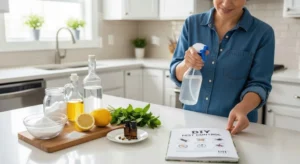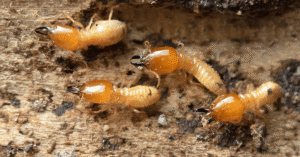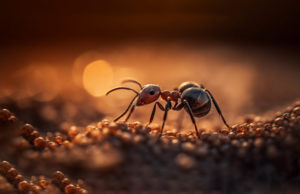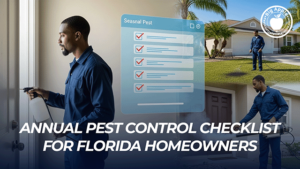Everybody desires to have no unwelcome company in their home and not the six legs. It does not always mean that costly pest management at the hands of professionals and harsh toxic chemicals are required to handle pests. Most pest issues are personal, and with the proper tools and information, it is possible to address them at a level of safety and effectiveness.
In this detailed guide, we will take you through some of the tested DIY pest control methods. You will know how to do pest control at home by yourself. Be it ants, cockroaches, or rodents, these homeowner remedies will aid you in reclaiming your space.
Knowledge of Common Pests in a Household
Information is everything; the earlier step in proper pest control is the identification of the pest involved. Various pests need diverse solutions. Ants trace odors and hunt for food, whereas cockroaches like humid places.
Ants, cockroaches, flies, spiders, and rodents are typical household invaders. All pests behave and prefer different things. An ant will mostly get inside through small cracks in search of either sweet or greasy foods. Kitchens and bathrooms are warm and humid in nature, areas that cockroaches use to hide. Such patterns will allow you to address your control more efficiently.
Prevention: Your Initial Defense
There is nothing better than prevention. The cleaner you keep your house, the greatest weapon against pests. Frequent cleaning gets rid of the food supply and destroys the environment that pests require to multiply.
The first one is sealing entry points around your home. Inspect damages on walls, spaces around windows, etc., and holes around pipes. These access paths are to be blocked off by caulk or steel wool. Put foods in an airtight container and wipe spills instantly. Seal up leaking pipes and remove standing water because moisture attracts most of the pests.
Natural Repellents and Deterrents
Natural provides excellent solutions to pest control without detrimental chemicals. Such oils as peppermint, tea tree, and eucalyptus repel numerous insects. It can effectively be used as a safe deterrent by mixing a few drops in a spray bottle and pouring it into water.
Diatomaceous earth is magical against the crawling insects. Such natural powder is harmful to the exoskeletons of the pests, making them dehydrated. Use food-grade diatomaceous earth along pest entry points, pathways, and grain stores. Coffee grounds, cinnamon, and citrus peels are also repellents of various pests that keep your home smelling fresh, too.
Killing Specific Pests
Various pests need specific treatment to eliminate them. Ant management is aimed at interfering with their communication and food. An important aspect of controlling cockroaches is the removal of hiding points and moisture.
In the case of ants, one can use borax-based bait or vinegar to disrupt their scent paths. Put coffee or cinnamon in the entrance areas. With the cockroach, mix the sugar and boric acid as bait, and do not expose it to children and other pets. Detect and trap both of the pests by using sticky traps. Apple cider vinegar traps act as a good bait for flies, whilst spiders do not like citrus.
Homemade Baits and Traps
Homemade traps are cost-efficient and require commonly available things. These solutions are directed against particular pests, and they do not use any poisonous chemicals in your living premises.
- Fruit fly traps: Mix apple cider vinegar with dish soap in a small bowl
- Ant baits: Combine borax with honey or sugar (keep away from children)
- Cockroach traps: Use petroleum jelly around jar rims with bait inside
- Mouse traps: Peanut butter works better than cheese as bait
- Flea traps: Place shallow dishes of soapy water under lights overnight
Safe Chemical Alternatives
There are instances when natural processes require supplementation through more benign chemicals. Purchase items with pyrethrin or natural insecticide made of chrysanthemums. They rapidly decompose and do not pose much hazard to people and animals.
When properly used, Boric acid is good at controlling cockroaches and ants. Apply thin covers on places where pests move, not those places where children or pets can reach. Another low-toxic insect can also be done using diatomaceous earth, which affects crawling insects. Never use products without reading their labels, and usually apply them as directed.
Long-term Control Maintenance
Effective pest management is an effort and needs monitoring. Frequent surveys will make you detect issues when they are still at an initial stage instead of turning into infestations. Test frequent trouble spots and resolve the problem on a weekly basis.
Develop an environment-cleaning schedule that will remove pest attractants. Clean those areas regularly, including corners and areas under furniture, by vacuuming. Clean your dishes in a timely manner and keep food well. Check the moisture content and repair the leaks immediately. Ensure the outdoors is clear and overgrown bushes near your house are cut.
When to Call Professionals
There are cases when professional help is needed, even despite the most skillful DIY actions. Expert assistance is recommended when there are large infestations, structural damages, or health risks. Some other insects, like termites, bed bugs, and wasps, usually require special treatment.
Some of the signs that you need professional assistance are experience problems even after treatment, damage to the structures, or allergies to the bite of the pests. The presence of several types of pests or frequent reinfestations is also a sign of the necessity of professional evaluation. When you feel you cannot go it alone or are unsure of your safety, it is worthwhile to seek the assistance of a professional.
Creating Your Action Plan
Good pest control is done systematically. Prevention is the first step, followed by specific treatments, depending on the pest problems that you have. Keep track (in a written form) of what is effective and what is not to use in the future.
Come up with a yearly maintenance plan. Checks on pest prevention should be part of spring cleaning. There is increased care in summer for aerial insects. Fall implies closing off entry port areas prior to winter. Winter is an ideal time to have a thorough clean and plan prevention measures for the next year.
Conclusion
It is your right to manage the health of the living environment. Do it yourself! These are the ways of defending your family that do not cost much money on professional care. Begin with prevention, apply natural solutions when feasible, and don’t give up on your actions.
Keep in mind that a stubborn attitude is rewarded when coping with pests. The majority of infestations did not come over a given night and hence will not go away instantly. Good results come when combining several strategies. Maintain your house clean and block entrances, and solve the issues on time. It is possible to manage pests successfully and have a comfortable pest-free home with utmost care and a correct attitude.







